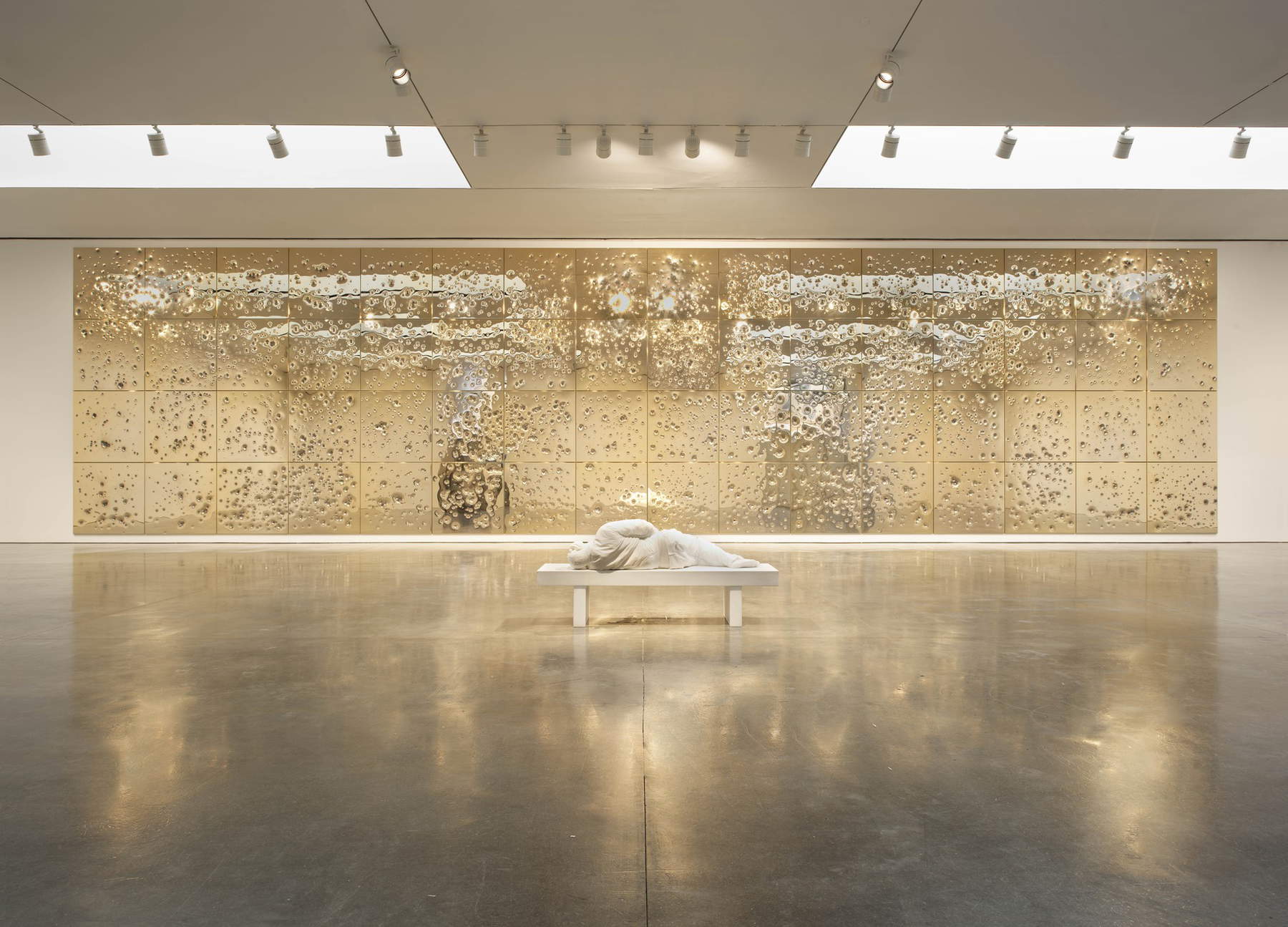Cattelan's new work reflects on the ease of access to guns in the U.S.
It has been a while since Maurizio Cattelan (Padua, 1960) has exhibited in the United States and in a commercial gallery: the last time was in 2014 in New York, with the exhibition Cosa Nostra at Venus Over Manattan. Now, ten years after his last solo gallery show and his last presence in the U.S., Cattelan is back across the pond again to exhibit at Gagosian. It has also been ten years since his last presence in one of Gagosian’s spaces (in London, in a group show). And now, here he is in New York again, with the solo show Sunday, his first at Gagosian, running from April 30 to June 15, curated by Francesco Bonami.
Cattelan’s new project, which the public can view at the gallery’s 522 West 21st Street, aims to challenge the contradictions of American culture and society, as he did in 2016 with America, the celebrated golden toilet he installed at the Guggenheim Museum. Cattelan thus returns to touch on sensitive issues with his eponymous installation, Sunday (2024), through which the Venetian artist embodies his vision on economic inequality as he had already done with America (2016), this time using precious metals to talk about the relationship between the United States and the ease of access to weapons, a condition against which privilege offers no defense. “We’re completely immersed in violence every day and we’re used to it,” Cattelan says. “Repetition has made us accept violence as inevitable.”
Stainless steel panels , plated with 24-karat gold, have been “modified” by gunshots. The formerly smooth surfaces of the components are left riddled with craters and holes, intending to evoke a history of firearms in art that extends from Édouard Manet’s The Execution of Emperor Maximilian (1868-69) to Chris Burden’s Shoot (1971) and William Burroughs’ gun paintings. Visitors to Gagosian’s New York headquarters, upon entering the exhibition, will immediately be confronted by an imposing wall of gilded panels, 5 meters high and stretching some 20 meters wide. Opposite, the audience will find November (2024), a marble fountain depicting a slouching figure engaged in urinating on the ground. Cattelan calls the work “a monument to marginality,” an image of a reality we habitually ignore. Echoing the 1619 Manneken Pis, a famous public sculpture in Brussels depicting a child urinating in a fountain, he presents the viewer with an uncomfortable violation of social norms.
“If you’re free to buy an assault rifle in a department store, what’s wrong with peeing in public?” asks curator Francesco Bonami. Cattelan, whom Bonami calls “the most famous Italian artist since Caravaggio,” therefore links the two works to the Catholic spiritual tradition in which he grew up, also pointing out that gold’s ease of casting and reuse gives the material a fungible, unfixed nature that allows it to effectively disappear. Even when dealing with such sensitive topics, however, he wants to remain in his soul a “Sunday” artist, avoiding explicit judgments in favor of presenting reality as he observes it. In Sunday, Cattelan affirms his ability to deal simultaneously with art history and current events, presenting them as two parallel but paradoxically converging tracks.

Notes on Maurizio Cattelan
Born in Padua, Italy, in 1960, Cattelan is one of the most provocative figures in the art world. Often dismissed as a serial good-hearted prankster, he is actually one of the leading figures in relational art, if not the main one, a deeply political artist whose work investigates issues that affect us all. The success of the artist’s recent exhibitions at the UCCA Center for Contemporary Art, Beijing, and the Leeum Museum of Art, Seoul, confirm his ability to engage both art world and global audiences. Currently, Cattelan is also on view at Moderna Museet, Stockholm, with Cattelan The Third Hand, through Jan. 12, 2025. His work is also on display in With My Eyes, the Vatican’s exhibition for the Holy See Pavilion at the 60th Venice Biennale.
Cattelan lives and works in Milan and New York. His work is included in the collections of museums such as: Museum of Modern Art, New York; Solomon R. Guggenheim Museum, New York; Museum of Contemporary Art, Los Angeles; Castello di Rivoli Museo d’Arte Contemporanea, Turin, Italy; and Migros Museum für Gegenwartskunst, Zurich. He has previously exhibited at: Felix, Museum of Contemporary Art, Chicago (2002-03); Museum of Contemporary Art, Los Angeles (2003); Museum Ludwig, Cologne, Germany (2003); Musee d’Art moderne de la ville de Paris/ARC at the Chapelle des Petits Augustins, Ecole nationale superieure des Beaux-Arts, Paris (2004); Museum für Moderne Kunst, Frankfurt am Main, Germany (2007); Tate Modern, London (2007); Beyeler Foundation, Riehen/Basel (2013); Blenheim Palace, Woodstock, England (2019); Leeum Museum of Art, Seoul (2023). In 2011, Cattelan’s work was the subject of All, a retrospective at the Solomon R. Guggenheim Museum, New York. The Last Judgment, his first solo exhibition in China, was presented at the UCCA Center for Contemporary Art, Beijing, from 2021 to 2022. His work has also been presented at the Venice Biennale (1993, 1997, 1999, 2002, 2003, 2011 and 2024); Manifesta 2, Luxembourg (1998); Istanbul Biennial (1998); and the Whitney Biennial, New York (2004). In 2002, Cattelan co-founded Wrong Gallery, New York, and in 2010 he co-founded Toiletpaper, a biannual visual magazine.
 |
| Cattelan's new work reflects on the ease of access to guns in the U.S. |
Warning: the translation into English of the original Italian article was created using automatic tools. We undertake to review all articles, but we do not guarantee the total absence of inaccuracies in the translation due to the program. You can find the original by clicking on the ITA button. If you find any mistake,please contact us.



























